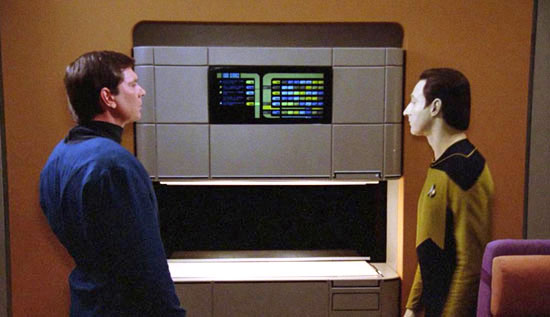
3D printing is one of those technologies that seem somewhat mysterious and futuristic. The closest experience most have with the science is from watching Star Trek where Data or Spock could request anything they wanted from a wall-mounted computer consul called the Replicator. It would  theoretically arrange subatomic particles into whatever was requested; like a meal, uniform or a spare part for a machine. Today, the process is a little different than what you might experience on the Starship Enterprise however, that concept isn’t too far off the mark. Modern processes don’t synthesize at the atomic level but rather build one layer at a time by extruding molten plastic or curing a resin using UV or laser light. After 30 years of perfecting additive manufacturing (3D printing) it has become a vital step in product development. Today people are 3D printing replacement tools, ornate foods, textiles for clothing and even organic matter like bone. With this technology emerging in mainstream, I wanted to visit ten major benefits of the technology…
theoretically arrange subatomic particles into whatever was requested; like a meal, uniform or a spare part for a machine. Today, the process is a little different than what you might experience on the Starship Enterprise however, that concept isn’t too far off the mark. Modern processes don’t synthesize at the atomic level but rather build one layer at a time by extruding molten plastic or curing a resin using UV or laser light. After 30 years of perfecting additive manufacturing (3D printing) it has become a vital step in product development. Today people are 3D printing replacement tools, ornate foods, textiles for clothing and even organic matter like bone. With this technology emerging in mainstream, I wanted to visit ten major benefits of the technology…
- Time-to-Market: 3D printing allows ideas to develop faster than ever. Being able to 3D print a concept the same day it was designed shrinks a development process from what might have been months to a matter of days, helping companies stay one step ahead of the competition.
- Save Money: Prototyping injection mold tools and production runs are expensive investments. The 3D printing process allows the creation of parts and/or tools through additive manufacturing at rates much lower than traditional machining.
- Mitigate Risk: Being able to verify a design before investing in an expensive molding tool is worth its weight in 3D printed plastic, and then some. Printing a production-ready prototype builds confidence before making these large investments. It is far cheaper to 3D print a test prototype then to redesign or alter an existing mold.
- Clear Communication: Describing the product you are going to deliver is often misinterpreted since it leaves construction up to the imagination. A conceptual picture of the product is better than the description since it is worth 1,000 words, but getting to hold the tangible product-to-be, in hand, clears all lines of communication. There is no ambiguity when holding the exact, or at least a very close, representation of the product.
- Feedback: With a prototype you can test the market by unveiling it at a trade-show, showing it to potential buyers or investors, or raising capital by pre-selling on IndiGogo or Kickstarter. Getting buyers response to the product before it actually goes into production is a valuable way to verify the product has market potential.
- Get the Feel: One thing you can’t get from a picture or virtual prototype on the computer screen is the way something feels in your hand. If you want to ensure the ergonomics and fit of a product are just right, you must actually hold it, use it and test it.
- Personalize It: With standard mass-production, all parts come off the assembly line or out of the mold the same. With 3D printing, one can personalize, customize and tweak a part to uniquely fit their needs, which allows for custom fits in the medical and dental industries and helps set people apart in the fashion and jewelry world.
- Build your Imagination: In the modern boom of digital art and design, the possibilities are not only accelerating but limitless. One can now 3D print almost anything they imagine after drawing it up virtually. In a relatively short time, an idea, concept, dream or invention can go from a simple thought to a produced part that you can hold.
- Square Holes?… No Problem: The limitations of standard machining have constrained product design for years. With the improvements in additive manufacturing, now the possibilities are endless. Geometry that has been historically difficult or impossible to build; like holes that change direction, unrealistic overhangs, or square interior cavities, is now possible and actually simple to construct.
- Fail Fast, Fail Quick, Fail Cheap: Being able to test ideas quickly and discover what doesn’t work accelerates discovery leading to an ideal solution. 3D printing allows a product developer to make breakthroughs at early stages that are relatively inexpensive leading to better products and less expensive dead-ends.
David Yakos is VP & Director of Creativity at Salient Technologies, Inc.

